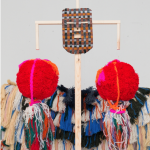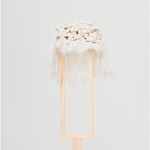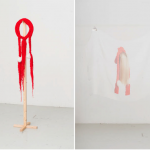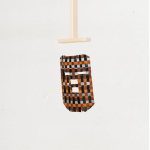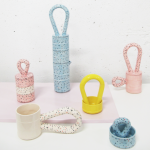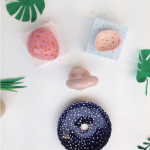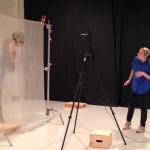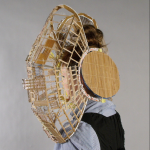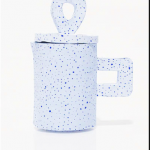Designs for Joy


By Moa Dickmark From Core77
There’s certain designers whose design language you simply appreciate, even though you might not know what it is or how to use it. I have been following Hanna Whitehead on Instagram for as long as she’s been on Instagram, seeing her progress and development every step of the way.
Just as with so many other Icelandic designers, Whitehead’s creativity seems to stretch and combine several elements in her work and I often ask myself is it product design or art? But then again—does it matter, do we really have to put a label on everything in order to appreciate what we are seeing? I don’t believe we do, which is why I simply appreciate her pieces for what they are, rather than try to define them.
Moa Dickmark: From where do you draw your inspiration?
Hanna Whitehead: I draw my inspiration from my process and what I see and do along the way. The process can start from a story, a picture, daily life, research, people or maybe just simply a color that I want to shape. I just go along with it. The only rule I try to have is to enjoy it and I hope because of that it brings joy to others.
A designer’s process can vary from project to project. How would you describe the process from your latest finished work?
My last work Weaving DNA came out of research about craft, especially textile craft in Scotland & Iceland. Claire Anderson, a textile designer, and I worked on a kind of visual conversation through the digital world. We’ve worked together since 2013 but have only meet three times during that time. She started by sending me a text in which I responded with a visual and in that way our body of work evolved. We basically just responded to each other’s visuals for three years. Sometimes we even misunderstood each other and then the process went into an unexpected place which lead to something new and exciting.
What did you find to be the most inspirational and giving throughout this rather untraditional process?
Our dialogue was always my inspiration and to work this way felt somehow free. Maybe because we didn’t know one another we didn’t have much knowledge about each other’s work and therefore we managed to surprise each other throughout the project. We also worked with the very gifted photographer Tian Khee Siong who, in the end of this part of the project, managed to put all our work and thoughts into the right perspective. That was very important because our project was built up in exchanging visuals in 2D.
When looking at your body of work, it’s hard to define define what you do. How would you describe yourself?
I describe myself as a product designer. I really want my products to be part of people’s homes. They might be unconventional or slightly unpractical but I believe that some people can relate to the products—products can make people happy—and people want them as a part of their daily life. The products may not solve a physical problem but they exist purely for joy. So maybe in that way they solve a problem, just of a different kind.
What response do you get when people interact with your pieces?
All sorts of responses. Many people are curious about them, smile and have a connection to them. Some find them too colorful or not quite straight enough.
One guy told me once that my design somehow had humor but was very serious. I think that is kind of true.
During one of your projects you moved into a world that lies between conceptual art and avant garde fashion. Is this something you want to explore more?
I think I always have a product design viewpoint on everything, I want to move freely within that into all sorts of directions.


Both production and more conceptual based projects.
What direction are you curious about exploring next?
I would love to explore some new materials. I dream about working with glass for example—so many possibilities there with feeling, texture and colors. I saw Oiva Toikka’s exhibition in Helsinki a few years ago and was so impressed by his work.
There was an interview with him there talking about how glass happens in the moment. It is a direct process. That is very exciting. I also would love to work with spaces more, it is something I am very interested in.
Is there anything you know now that you wish you knew back when you started on this path ?
I wish I would have known more about the business of it all, it sounds boring but it matters. For things to be able to flow you need some money that is just the way it is.
Also I needed some time to find my path. Of course I made mistakes on the way working on projects that took a lot of energy instead of giving but every time I made some mistakes I always tried to regard them as part of the process and I am grateful for all of them.
I also think I am just starting to find my way and I hope this road takes me to a lot of different places. And that I never stop learning something new.
IMAGES;
Hanna Whitehead
Kiosk
Kaffi
Behind the scenes of Weaving DNA
Weaving DNA
Fishleather
Weaving DNA
Weaving DNA
Kaffi
Don’t forget the
core77 conference
designinq here/now
2016 SEPTEMBER 29 – 30
LOS ANGELES, CA
For more on this story go to: http://www.core77.com/posts/54541/How-Icelandic-Designer-Hanna-Whitehead-Designs-for-Joy?utm_source=feedburner&utm_medium=feed&utm_campaign=Feed%3A+core77%2Fblog+%28Core77.com%29

